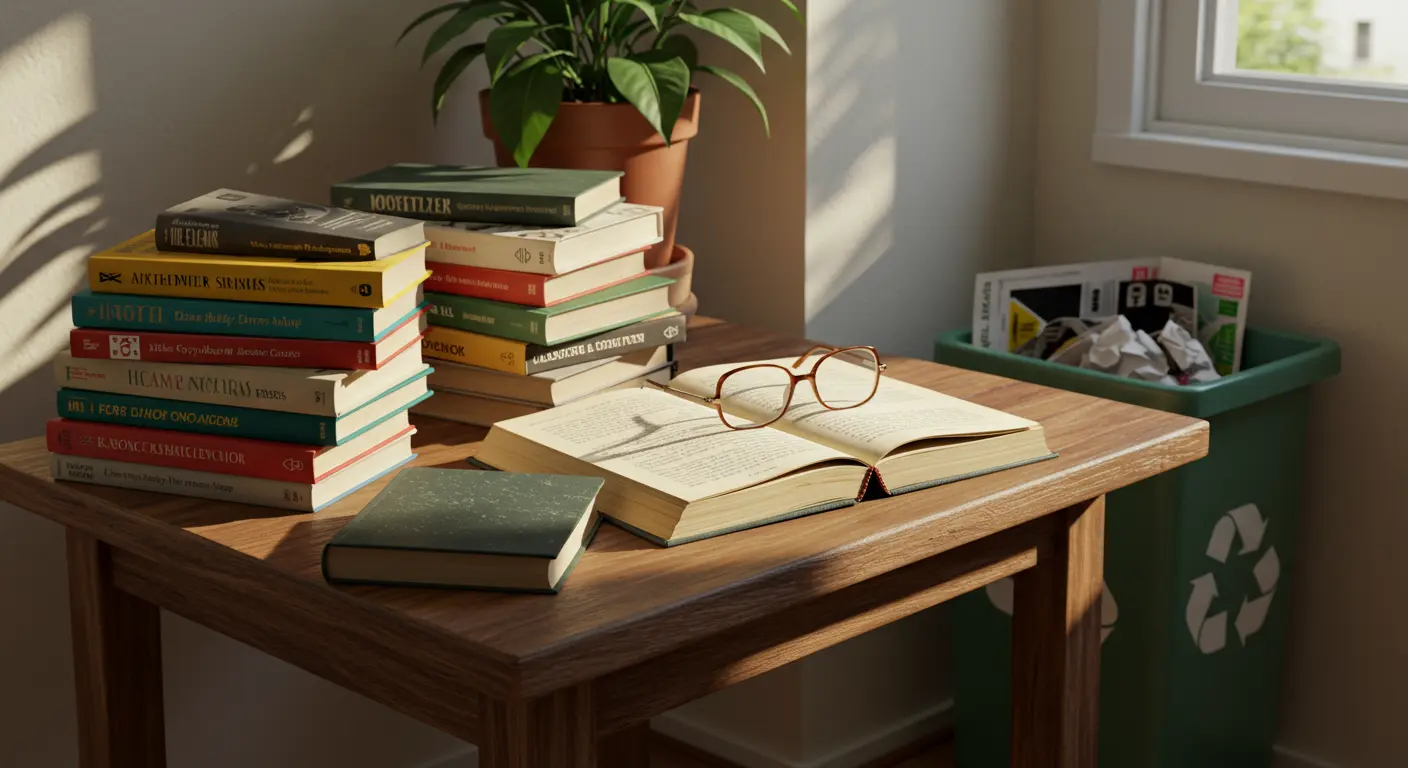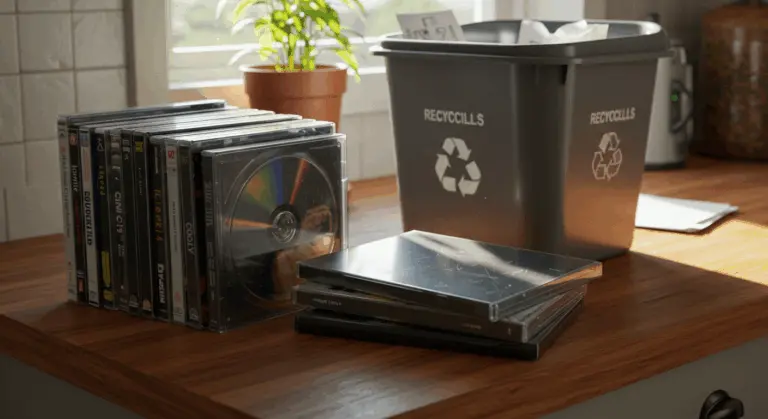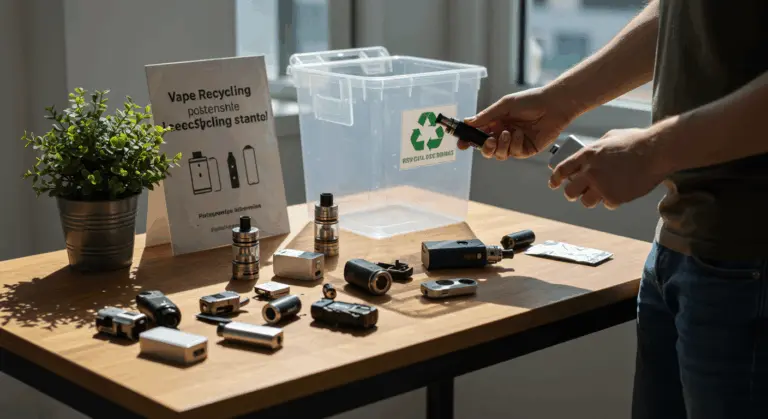Understanding Book Recycling – What You Need to Know
Book recycling transforms old, unwanted, or damaged books into reusable materials—primarily paper. This eco-friendly practice diverts books from landfills while conserving natural resources. When you recycle books, you’re joining a sustainable cycle that reduces demand for new paper, saving trees, water, and energy.
Book recycling offers significant environmental benefits. For every ton of paper recycled, we save approximately 17 trees, 7,000 gallons of water, 380 gallons of oil, and 4,000 kilowatts of energy. Additionally, recycling reduces greenhouse gas emissions that would otherwise be generated during the manufacturing of new paper products. Each recycled book contributes to environmental protection.
Book recycling also book recycling strengthens communities by funding literacy projects and creating a circular economy where materials get reused.
Not all books follow the same recycling path. Paperbacks typically go into curbside bins, while hardcovers demand special handling. Check your local recycling guidelines—proper disposal procedures vary significantly by location.
Types of Books – Which Can Be Recycled?
Paperback books are the easiest to recycle and are widely accepted in most curbside recycling programs. Put them into your blue bin alongside other mixed paper products. Their simple construction—primarily paper with minimal binding materials—makes them ideal candidates for recycling.
Hardcover books need more preparation before recycling. Their covers—often containing cardboard, cloth, leather, or synthetic materials—typically can’t be recycled with regular paper. To properly recycle a hardcover, you’ll need to remove the cover and binding (which get discarded) and recycle only the paper pages. Some recycling centers maintain specific hardcover processes.
The following book features present recycling challenges and may require special handling:
-
Glossy pages, metallic inks, or plastic coatings.
-
Spiral bindings, plastic inserts, or electronic components.
-
Laminated covers, which should be removed before recycling.
Some books can’t be recycled. Moldy or water-damaged books are generally not accepted for recycling as the mold can contaminate the recycling process and affect the quality of recycled paper products. Books with significant food stains, oil marks, or strong odors should also be avoided in recycling streams. In these cases, throw them away with regular trash.
Before recycling, think about reuse potential. Books in good, readable condition—free of mold, water damage, and heavy marking—make excellent candidates for donation or resale. Reserve recycling for books too damaged or outdated for reuse. This gives books the longest possible life.
What to Do with Damaged or Old Books
When books reach their twilight years or suffer damage, you have several eco-friendly options before you consider disposal. For books with minor damage, consider repurposing them into creative craft projects. Old books can be transformed into art pieces, decorative items, or even practical objects like hidden storage boxes. Damaged pages make excellent plant substrate before composting—giving them new life in your garden.
Books in good condition can be donated to local libraries, university book drives, or charity shops. These organizations often use them for collections, fundraising sales, or student support programs. Be aware that some centers may not accept outdated textbooks, encyclopedias, or magazines.
If your books retain market value, consider selling them individually on platforms like Amazon, eBay, or through used bookstores. This keeps books in circulation while earning you money. For educational materials—especially textbooks—consider joining textbook drives that send resources to under-resourced countries, combining recycling with global education support.
Where to Recycle Books – Your Options
Finding places to recycle your books doesn’t have to be difficult. There are numerous options available depending on your location and the condition of your books. For those living in urban areas like north London, dedicated reuse and recycling centers often feature book banks operated by organizations such as Better World Books, making book recycling easy and effective.
Donation bins offer another convenient avenue for books in good condition. Make sure that reputable charities manage these bins—so your books are handled properly.
For books that still have value but you no longer need, consider listing them for free on neighborhood social media groups, community bulletin boards, or platforms like Craigslist and Free cycle. This direct approach connects your books directly with community members, typically requiring minimal effort from you.
If traditional recycling isn’t available in your area, specialized recycling services like Terra Cycle offer mail-in programs for books and other paper products. Though these services sometimes involve fees, they help people in areas without local recycling options.
Using Recycling Bins and Donation Bins
Community Initiatives for Book Recycling
Across the country, community-based book recycling initiatives are making real differences on both literacy and environmental sustainability. Organizations like Cans4Books in San Diego have created new approaches—transforming recycling programs into funding mechanisms that deliver free children’s books to community members. This creative funding model simultaneously addresses waste reduction and promotes reading among young people.Better World Books is another great example, operating on a larger scale by forming strategic partnerships with literacy organizations. Their approach supports reading programs while keeping millions of books from landfills. When you donate books to Better World Books, you’re contributing to both environmental conservation and educational advancement in underserved communities.
Local institutions also are important parts in book recycling ecosystems. Public libraries frequently operate donation programs where gently used books find new readers through library sales or direct patron redistribution. Similarly, schools often accept book donations to enhance classroom libraries, support reading programs, or organize book exchanges where students can trade reading materials.
These community initiatives combine environmental responsibility and social impact. They reduce waste, strengthen community bonds, and make books more accessible—creating ripple effects that extend far beyond simple recycling.
Creative Ways to Repurpose Old Books
When cherished books become too worn for donation yet too precious for recycling bins, creative reuse provides environmental and personal benefits. Book upcycling has become a popular form of creative expression that respects the book while creating something new.
Artistic book folding is one of the most impressive ways to repurpose old books. By carefully folding pages to create three-dimensional patterns, words, or silhouettes, crafters transform outdated encyclopedias or damaged novels into stunning sculptural pieces. These sculptural creations become unique gifts and conversation-starting decor while keeping the book’s character.
For those with crafting skills, old books are great materials for creating new paper products. The pages can be bound into handmade journals with personalized covers, while individual sheets work beautifully for scrap booking backgrounds, origami projects, or even as distinctive gift wrapping paper. The weathered patina of vintage pages adds character that new paper can’t match.
Book covers, especially hardcovers with their sturdy construction, can be reused in many ways. They can be transformed into durable bookmarks, tablet or e-reader cases, or even small planters for succulents. Creative crafters transform book covers into memory boxes, jewelry cases, or decorative wall hangings—keeping their bookish look while serving new purposes.
For bigger projects, books can become furniture components or lighting fixtures. Stacked volumes create striking table bases. Hollowed-out books become ingenious storage containers or secret hiding places. Creative designers have fashioned stunning lampshades from book pages, creating warm, diffused lighting with literary flair. These projects keep books out of landfills while creating unique furniture.
Even gardeners use old books into their landscapes. Waterproofed book covers can become plant markers, while pages can be shredded for compost or mulch. Some gardeners create whimsical ”book planters” by hollowing out the centers of hardcover books and lining them with plastic before adding soil and plants – creating miniature literary gardens that bring joy both indoors and out.
These creative transformations respect the original materials while reducing waste. They create unique, meaningful treasures that honor both books and the environment.
Benefits of Reusing and Recycling Books
Book reuse and recycling provide environmental benefits beyond just clearing space. When we sell or donate used books, we extend their useful lifespan, creating a circular economy that benefits both people and planet. Each book that finds a second home represents resources saved—the trees, water, and energy that would otherwise be required to produce a new copy.
From an environmental perspective, book reuse is better than recycling in efficiency. The process of recycling, while valuable, still requires energy and water to break down and reform paper fibers. By contrast, passing a book directly to another reader uses almost no extra resources while fulfilling the same purpose. This direct exchange eliminates carbon footprints tied to manufacturing, printing, and distributing fresh copies.
Book recycling and reuse also create economic benefits throughout communities. Local bookstores, charity shops, and online marketplaces benefit from used book exchanges—creating jobs while generating revenue that often funds literacy programs and educational initiatives. Libraries benefit from donated books that expand their collections without straining limited budgets, while schools can provide more reading materials to students through book donation programs.
Most importantly, the culture of book reuse makes it easier to access knowledge and literature. When secondhand channels make books affordable and accessible, people across all economic levels can benefit from reading. This accessibility cultivates literacy, education, and cultural engagement throughout communities—showing that books have value beyond their first reading.




